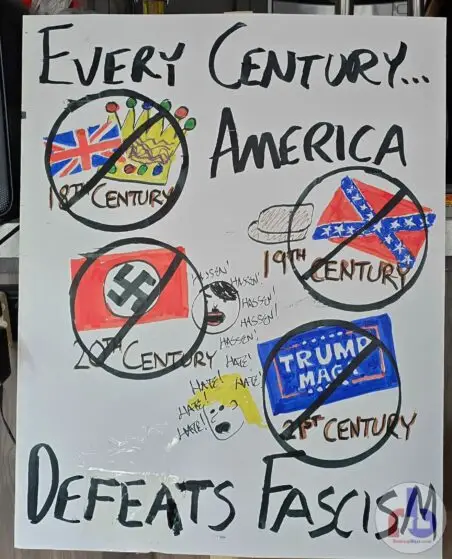The Real Joke: The History of DEA’s Opinion on Medical Marijuana
The acting head of the Drug Enforcement Administration, Chuck Rosenberg, made headlines this week when he said the following to a group of reporters:
“What really bothers me is the notion that marijuana is also medicinal — because it’s not,” Rosenberg said in a briefing to reporters. “We can have an intellectually honest debate about whether we should legalize something that is bad and dangerous, but don’t call it medicine — that is a joke.”
[…]
“There are pieces of marijuana — extracts or constituents or component parts — that have great promise” medicinally, he said. “But if you talk about smoking the leaf of marijuana — which is what people are talking about when they talk about medicinal marijuana — it has never been shown to be safe or effective as a medicine.”
This elicited howls of outrage from the medical marijuana community. There is currently a Change.org petition calling on Rosenberg to be sacked.
But really, what does anyone expect from the head of an agency charged with enforcing drug laws that equate cannabis with heroin and PCP? If Rosenberg goes, does anybody expect his replacement to buck the system that provides much of their reason for being?
Looking back at previous DEA leaders, you’ll find the same levels of Reefer Madness. Who can forget Rosenberg’s predecessor, Michele Leonhart, who declared that the lowest point in her three-decade career in drug law enforcement was when a hemp flag was flown over the US Capitol.
It was Leonhart’s mismanagement of the DEA in a Colombian sex-party scandal that led to her ouster. It wasn’t that she could not give Congressmen Jared Polis, Earl Blumenauer, and Steve Cohen a straight answer to the question, “Is marijuana more dangerous to the user than heroin / cocaine / methamphetamine?”
Leonhart, like Rosenberg, was just the Acting Administrator of the DEA. Confirming administrators, you see, subjects them to questioning by the Senate, which the House has shown can be fairly embarrassing for drug warriors these days.
The last confirmed DEA Administrator was Karen Tandy, who served in the George W. Bush Administration from 2003 through 2007. In her confirmation hearings, she told Senator Dick Durbin that “The active ingredient in marijuana, THC, has been accepted as having medicinal value when processed into Marinol. Marijuana itself, however, has not been shown to have medical benefits; accordingly, I have no basis for believing that marijuana, and smoking marijuana, has any such benefits.”
The DEA Administrator before Tandy was Asa Hutchinson, the current governor of Arkansas. In charge from 2001 to 2003, Hutchinson was instrumental in the raids against Santa Cruz medical marijuana pioneer, Valerie Corral and her WAMM collective (click to Save WAMM). When California’s Attorney General complained about the federal overreach, Hutchinson replied “Your repeated references to ‘medical’ or ‘medicinal’ marijuana illustrates a common misperception that marijuana is safe and effective medicine.”
Preceding Hutchinson as DEA Administrator was Donnie R. Marshall from 2000 to 2001. Marshall was the Administrator who rejected Jon Gettman’s petition to have marijuana moved out of Schedule I, because even if it theoretically wasn’t as dangerous as heroin and PCP, “marijuana would not meet the criteria for placement in schedules III through V since it has no currently accepted medical use in treatment in the United States.” There were eight medical marijuana states when he wrote that.
Before Marshall we had Thomas R. Constantine from 1994 through 1999 as DEA Administrator. He was the one who got very upset when Candice Bergen’s character on the popular sitcom Murphy Brown smoked some medical marijuana to ease her battle with cancer. “I am extremely troubled that at a time when teenage drug abuse is doubling,” Constantine was quoted by the Washington Post, “a television show of the caliber of ‘Murphy Brown’ would portray marijuana as medicine. It is not medicine.”
Prior to Constantine there was Robert C. Bonner from 1990 through 1993. Medical marijuana hadn’t yet passed in any state, but NORML and other groups were filing federal lawsuits to challenge the Schedule I designation. Bonner dismissed the idea that marijuana had medical value, writing, “Lay testimonials, impressions of physicians, isolated case studies, random clinical experience, reports so lacking in details they cannot be scientifically evaluated and all other forms of anecdotal proof are entirely irrelevant.”
Bonner’s predecessor was John “Jack” Lawn from 1985 to 1990. Lawn was DEA Administrator when his own administrative law judge, Francis L. Young, declared that “Marijuana, in its natural form, is one of the safest therapeutically active substances known to man.” Lawn simply rejected Judge Young’s decision and the Court of Appeals allowed Lawn’s rejection to stand because “only rigorous scientific proof can satisfy the [law’s] ‘currently accepted medical use’ requirement.”
Lawn inherited the DEA Administrator job from Francis M. Mullen, Jr., who ran the DEA from 1981 to 1985. The late ‘70s and early ‘80s marijuana scene mostly relied on imported marijuana from Mexico. There was a huge public health scare when the US began spraying illegal Mexican cannabis crops with paraquat, an herbicide harmful for human consumption. “The use of the herbicide paraquat to destroy cannabis is both appropriate and environmentally sound,” Mullen wrote to the New York Times. “Marijuana is a dangerous drug which has damaging effects on the lungs, reproductive organs and the immunity system; it impairs memory, learning performance and motivation; it may permanently damage brain tissue.”
Mullen succeeded Peter B. Bensinger as DEA Administrator, who had the job from 1976 to 1981. Bensinger has always maintained that marijuana is not medicine. When Angel Raich took her California medical marijuana case to the Supreme Court, Bensinger signed on to an amicus brief that argued, “Congress long ago determined that the federal government, rather than the medical profession or the states, would determine how, and under what circumstances, narcotics could be used…”
(Fun bonus fact from a Yahoo! News editor’s note: “Bensinger is currently president and CEO of Bensinger, DuPont & Associates, a private consulting firm that promotes drug-free workplaces. Among the services offered to clients are employee drug testing, health and safety training programs and risk management.”)
But it didn’t have to be this way. The very first DEA Administrator was named John R. Bartels, Jr., from the agency’s founding in 1973 through 1975. Back in 1974, the Centralia Daily Chronicle reported that Bartels was “alarmed at a startling increase in the number of persons arrested for possessing small amounts” of marijuana and had announced DEA wanted “to determine whether there’s a way to end the threat of jail sentences and criminal records for thousands of young people while maintaining a strong legal deterrent to marijuana use.” While he didn’t expect a major shift in policy, Bartels said, “there may be a slight change in emphasis,” citing Oregon’s then year-old marijuana decriminalization law as a potential model under review.
From John R. Bartels to Chuck Rosenberg, we’ve gone from a DEA head interested in decriminalization of marijuana to a DEA head who thinks marijuana isn’t medicinal and we’re actually smoking leaf rather than bud. But at least Rosenberg acknowledges that “heroin is clearly more dangerous than marijuana.” That’s some sort of progress.






